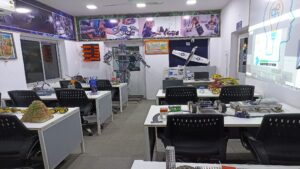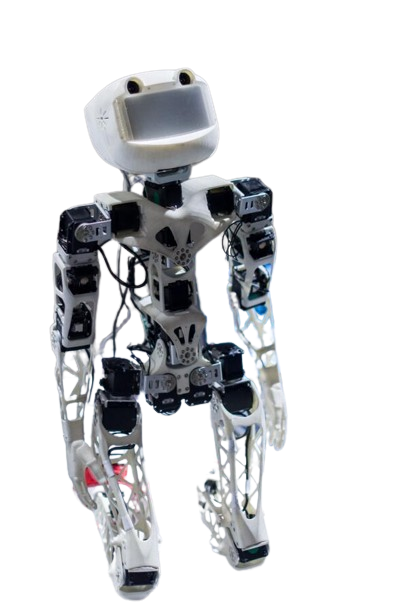The field of robotics has undergone unprecedented advancements in recent years, with a significant contribution coming from the establishment of robotics lab. These labs have evolved into hubs for innovation, learning, and experimentation, catering to a diverse audience, ranging from school students to enthusiasts setting up their personal spaces.
1. Robotics Labs in Educational Institutions: Nurturing Future Innovators
In educational settings, robotics lab play a pivotal role in introducing students to the captivating realm of robotics. These labs transcend traditional classroom learning by providing students with hands-on experiences and exposure to state-of-the-art technology. Equipped with robotic kits, programming languages, and collaborative project opportunities, these labs cultivate creativity and problem-solving skills among students.
In robotics labs in schools, students not only grasp theoretical concepts but also apply them practically. They gain insights into the mechanics of robotic arms, the intricacies of sensors, and the functionality of microcontrollers. The goal is to ignite a passion for robotics and encourage students to pursue STEM (Science, Technology, Engineering, and Mathematics) fields.
2. The Essentials of a Robotics Lab Setup: Building the Foundation for Learning
A successful robotics lab setup entails meticulous planning and the careful selection of equipment. From basic robotic arms to sophisticated sensors and microcontrollers, each component plays a vital role in shaping the overall learning experience. The lab environment is designed to foster curiosity and spark the imagination of individuals entering this innovative space.
The physical layout of the lab is crucial, ensuring that it accommodates a variety of activities. Workstations equipped with computers, soldering stations, and a range of robotic components create an immersive learning environment. Additionally, the lab should be adaptable to accommodate both individual and group projects, fostering collaboration and teamwork.
3. Open Robot Labs: Fostering Collaboration and Knowledge Sharing
Open robot labs represent a paradigm shift in the approach to learning and collaboration. These labs are intentionally designed to be accessible to a broader community, transcending the boundaries of educational institutions. Students, researchers, hobbyists, and professionals converge in these open spaces, creating an environment that encourages the exchange of ideas, resources, and expertise.
The open nature of these labs promotes a culture of knowledge sharing. Participants can access a diverse range of robotic platforms, tools, and technologies, allowing for cross-disciplinary collaboration. Open robot labs often host workshops, seminars, and hackathons, further enriching the learning experience and fostering a rich ecosystem of innovation.

4. Personal Robotics Labs: Unleashing Creativity in Your Home Space
The democratization of robotics is evident in the rising trend of individuals setting up personal robotics labs in their homes. Affordable robotic kits and accessible resources have empowered enthusiasts and hobbyists to explore their interest in robotics within the comfort of their personal spaces.
Personal robotics labs serve as incubators for creativity and experimentation. Enthusiasts can delve into do-it-yourself (DIY) projects, experimenting with robotics kits, learning programming languages, and building functional robots. This DIY culture is a driving force behind the innovation seen in personal robotics labs, and it is reshaping the landscape of robotics exploration.
5. SP Robotics Maker Lab: A Pioneer in Robotics Education
Among the notable contributors to the field of robotics education is SP Robotics Maker Lab. Positioned as a leader, SP Robotics has established maker labs with a distinct focus on hands-on learning and practical applications. These labs provide students with a structured curriculum, ensuring a comprehensive education in robotics.
SP Robotics Maker Labs are equipped with cutting-edge technology, offering students exposure to the latest developments in the field. The curriculum is designed to cover fundamental concepts, advanced topics, and real-world applications. Students not only gain theoretical knowledge but also apply it through hands-on projects, preparing them for the dynamic and evolving field of robotics.
Conclusion:
The Ever-Growing Landscape of Robotics Labs
In conclusion, the evolution of robotics labs—from school environments nurturing future innovators to open spaces fostering collaboration and personal labs fuelling individual creativity—underscores the dynamic nature of the robotics landscape. These labs have become integral to the development of robotics as both a field and a skill set.
Whether you are a student embarking on a journey of discovery, a hobbyist exploring the realms of DIY robotics, or a professional seeking to stay at the forefront of innovation, the diverse world of robotics labs offers opportunities for learning, experimentation, and the exploration of limitless possibilities within robotics.
The continuous growth and diversification of robotics labs reflect the broader societal shift towards embracing technology and innovation. As we look to the future, the collaborative efforts within these labs will likely shape the next generation of robotic advancements, bringing us closer to a world where robotics plays a pivotal role in various aspects of our lives. The journey into the world of robotics labs is not just a learning experience; it’s a step towards shaping the future of technology.

